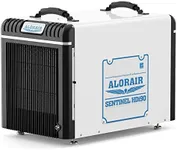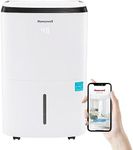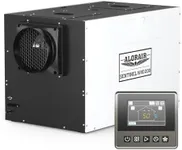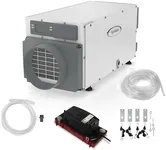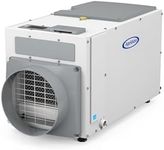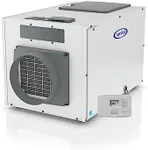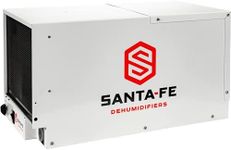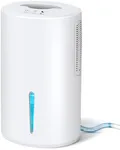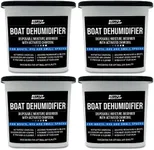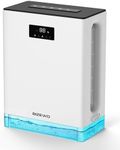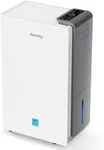Buying Guide for the Best Whole House Dehumidifiers
Choosing the right whole-house dehumidifier is essential for maintaining a comfortable and healthy living environment. A dehumidifier helps to control the humidity levels in your home, preventing mold growth, reducing allergens, and protecting your furniture and belongings from moisture damage. When selecting a whole-house dehumidifier, it's important to consider several key specifications to ensure you get the best fit for your needs.CapacityCapacity refers to the amount of moisture a dehumidifier can remove from the air in a day, usually measured in pints per day (PPD). This spec is crucial because it determines how effective the dehumidifier will be in controlling humidity levels in your home. For small to medium-sized homes, a capacity of 30-50 PPD may be sufficient. For larger homes or areas with high humidity, you might need a unit with a capacity of 70 PPD or more. To pick the right capacity, consider the size of your home and the average humidity levels in your area.
Coverage AreaThe coverage area indicates the maximum square footage that the dehumidifier can effectively manage. This is important to ensure that the dehumidifier can handle the entire space of your home. Coverage areas can range from 1,000 to over 4,000 square feet. To choose the right coverage area, measure the total square footage of your home and select a dehumidifier that can cover at least that amount. If your home has multiple floors, consider a unit with a higher coverage area to ensure even humidity control throughout.
Energy EfficiencyEnergy efficiency is a measure of how much energy the dehumidifier uses to remove moisture from the air. This is important because a more energy-efficient unit will save you money on your energy bills and reduce your environmental impact. Look for dehumidifiers with an Energy Star rating, which indicates that the unit meets strict energy efficiency guidelines. To pick the right one, consider the long-term energy savings and choose a unit that balances efficiency with performance.
Noise LevelNoise level refers to how loud the dehumidifier is when it is operating, usually measured in decibels (dB). This is important if you plan to place the dehumidifier in a living area or near bedrooms, as a noisy unit can be disruptive. Noise levels can range from around 40 dB (quiet) to over 60 dB (loud). To choose the right noise level, consider where the dehumidifier will be located and how sensitive you are to noise. Opt for a quieter unit if noise is a concern.
Drainage OptionsDrainage options refer to how the dehumidifier disposes of the collected moisture. This is important for convenience and maintenance. There are typically two options: manual drainage, where you need to empty a water bucket, and continuous drainage, where the unit is connected to a drain or a pump to automatically remove water. To pick the right option, consider how often you want to deal with emptying the water. Continuous drainage is more convenient for whole-house dehumidifiers, especially if you plan to run the unit continuously.
Control FeaturesControl features include the settings and functionalities available on the dehumidifier, such as humidistats, timers, and remote controls. These features are important for ease of use and customization. A humidistat allows you to set the desired humidity level, and the unit will automatically maintain it. Timers can help you schedule operation times, and remote controls add convenience. To choose the right control features, think about how much control and automation you want over the dehumidifier's operation.
Filter Type and MaintenanceThe filter type and maintenance requirements refer to the kind of air filter the dehumidifier uses and how often it needs to be cleaned or replaced. This is important for maintaining air quality and the efficiency of the unit. Some dehumidifiers have washable filters, while others use replaceable filters. To pick the right filter type, consider how much maintenance you are willing to perform and whether you prefer washable or replaceable filters. Regular maintenance is key to ensuring the dehumidifier operates effectively.
